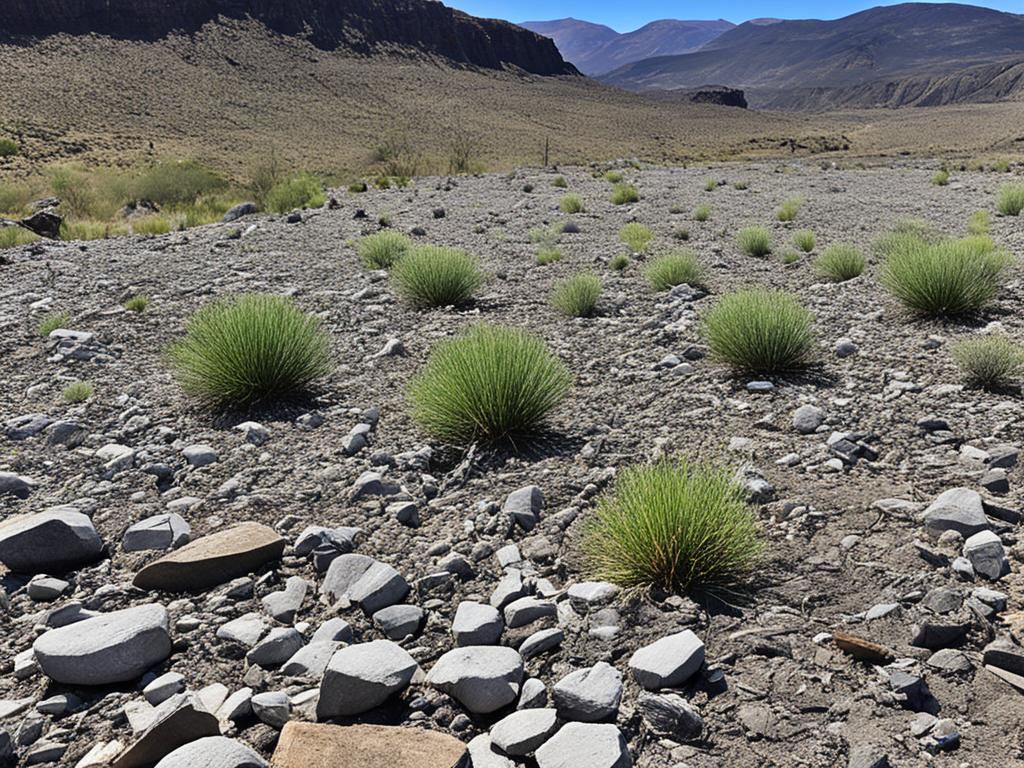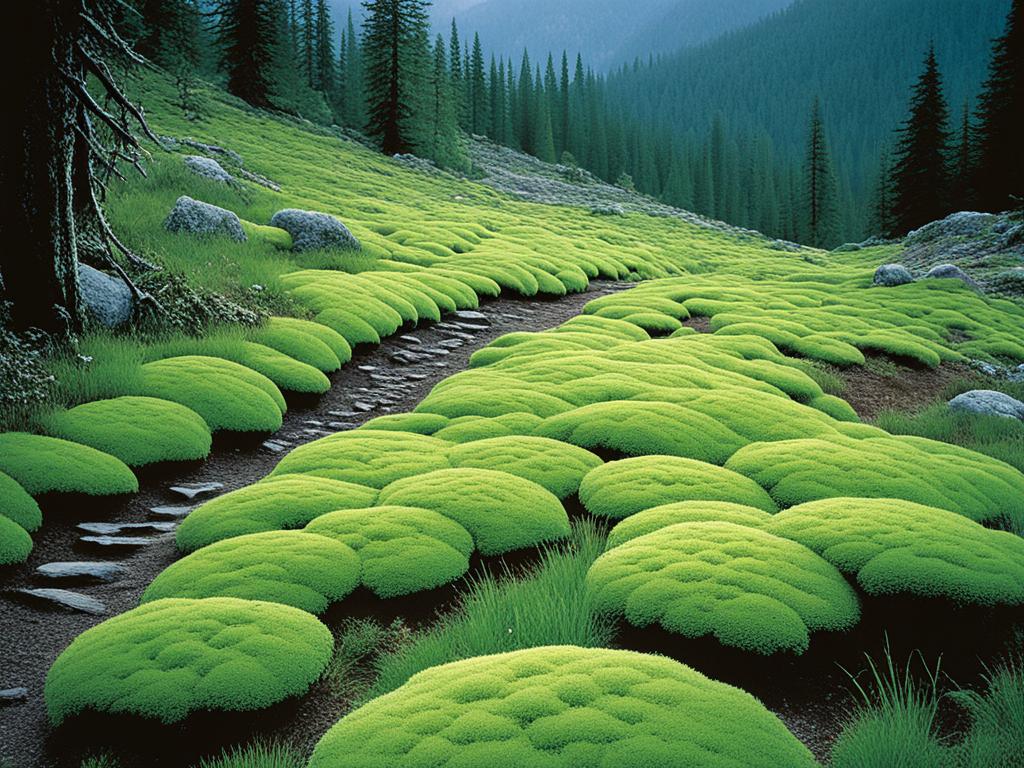Ecological succession plays a key role in how ecosystems develop and bounce back. It’s about the steps biological communities take after a disturbance or when new habitats form. According to “Ecological Succession: Foundations of Ecology”, this process is crucial for ecosystems to recover, adapt, and flourish.
“Nature’s Recovery Path: Ecosystem Development and Dynamics” highlights the importance of ecological succession. It’s seen as fundamental in grasping how ecosystems rebound from disturbances. The study of pioneer species and climax communities, as in “Pioneer Species and Climax Communities: A Deep Dive into Ecosystem Maturation”, shows how organisms impact the ecosystem’s change over time.
Looking into ecological succession stages helps scientists understand ecological resilience. It also helps predict how ecosystems might react to environmental shifts. This insight is vital for conserving the environment and managing natural resources.
Key Takeaways
- Ecological succession is vital for understanding ecosystem resilience and development.
- Succession includes changes in species composition and community structure over time.
- Early stages involve pioneer species, while climax communities mark maturity.
- Research on ecological processes aids in environmental conservation efforts.
- Understanding succession helps predict ecosystem responses to disturbances.
Understanding Ecological Succession and Its Importance
Ecological succession explains how ecosystems develop over time. It shows how nature’s habitats change and grow. This concept helps us understand the complex interactions in natural settings.
Definition of Ecological Succession
Ecological succession refers to predictable changes in a community over time. These changes stem from how species interact with their surroundings. They lead to the creation of stable and mature ecosystems. Examples include the transition from bare land to lush forests. This showcases the power of ecological changes.
The Importance of Studying Ecological Succession
Examining ecological succession is vital for several reasons. First, it helps us grasp biodiversity through ecosystem development. We learn how different species settle and adjust to new areas. This understanding is key for restoring habitats by letting nature take its course for faster recovery. Additionally, knowing about succession can guide us in fighting climate change. It sheds light on how ecosystems adjust to changes in the environment.
Primary Succession: From Barren Land to Flourishing Ecosystem
Primary succession shows how nature can turn barren lands into green ecosystems. This process starts with *pioneer species*. They can live in lifeless areas, starting the ecological growth.
Pioneer Species in Primary Succession
Lichens and mosses are key in *primary succession*. They survive in tough places without much food. Their arrival starts the creation of a new ecosystem. They break down rocks into soil, making space for more life.
Stages of Primary Succession
The transformation from bare land to rich ecosystem happens in steps. First, pioneer species make it easier for simple plants to grow. These plants change the environment, letting more complex plants come in.
This leads to richer soil and more life, including large plants and different animals. Each stage builds up on the previous one, making the ecosystem diverse.
Roles of Lichens and Mosses
Lichens and mosses are the starting points of primary succession. Lichens, a mix of fungi and algae, are great at making soil. Mosses keep moisture and add organic material when they break down. Together, they set the stage for bigger plants and animals, showing how *primary states start*.
Secondary Succession: Recovery After Disturbance
Secondary Succession helps ecosystems heal after disturbances. It happens where soil is still there. Understanding this process is key to seeing how ecosystems bounce back from things like fires, hurricanes, or human actions.

One amazing thing about Secondary Succession is how quickly life comes back. It starts with fast-growing plants that make the soil better. This shows how nature can quickly adapt and recover.
In various places, we can see Secondary Succession at work. In forests, certain plants move in first after an area is cleared or burned. Over time, larger and different plants take over. This shows the stages of disturbance recovery.
| Stage | Plant Species | Time Frame |
|---|---|---|
| Initial | Grasses and Shrubs | 0-2 years |
| Intermediate | Young Trees | 2-5 years |
| Mature | Diverse Forest Species | 5+ years |
Looking at these successions, we learn about ecosystem resilience. Studying Secondary Succession leads to better ways to restore habitats. It helps keep the environment healthy and sustainable.
Pioneer Species: Nature’s Early Colonizers
Pioneer species are vital in the first stages of ecological succession. They have traits that let them thrive in untouched or disturbed places. This starts the development of more complex ecosystems.
Characteristics of Pioneer Species
These early settlers are tough and adaptable. They grow quickly, spread seeds well, and handle extreme environments. These abilities help them settle in tough places fast.
Examples of Common Pioneer Species
Lichens and mosses take over bare rocks, while some grasses and herbs move into areas after wildfires. Each kind of pioneer species has special adaptations. This helps build the ecosystem from the start.
| Pioneer Species | Habitat | Notable Characteristics |
|---|---|---|
| Lichen | Barren Rocks | Symbiotic relationships, drought-tolerant |
| Mosses | Moist Areas | Resilient spores, low nutrient requirement |
| Fireweed | Post-Fire Landscapes | Rapid growth, extensive root systems |
| Bristlecone Pine | High Elevation | Long lifespan, tolerance to cold |
Climax Community: The Final Stage of Succession
The climax community is the peak of ecological change. It is where ecosystems become stable and last. This phase is marked by stability and a perfect fit with the surroundings.
Features of a Climax Community
In a climax community, the mix of species doesn’t change much, showing it can handle minor upsets. These areas, like old forests or grasslands, have complex living things interactions. They create a strong ecological balance.
Stability and Biodiversity in Climax Communities
These communities are stable thanks to evolved partnerships that keep the ecosystem balanced. This steadiness, with the area’s rich variety of life, means they can host many species. This diversity is key for ecological health. Therefore, climax communities play a big role in keeping our planet balanced.
Seral Stages: The Transitional Phases of Succession
The concept of seral stages shows how ecosystems change and grow. They move from a disturbed state to a stable community. Each step in this process is crucial for the ecosystem to develop and become more complex.

Pioneer species start the process, making the area better for new species. These early steps are very important. They create a base for a diverse ecosystem to grow.
As more species join, biodiversity and stability increase. Each species plays its part. Over time, these changes lead to a mature ecosystem.
“The seral stages, as described by the Seral Theory, serve not only as precursors to climax communities but also as essential phases where ecological interactions and adaptations are continually evolving.”
We learn a lot by studying seral stages. They give scientists important information about how ecosystems change. Knowing about these stages helps manage and protect nature better.
| Seral Stage | Key Characteristics | Example Species |
|---|---|---|
| Pioneer | High resilience, rapid growth | Lichens, Mosses |
| Intermediate | Increased biodiversity, habitat complexity | Grasses, Shrubs |
| Climax | Stability, diverse mature species | Oak trees, Deer |
Understanding seral stages shows the ever-changing nature of ecosystems. Each phase sets the stage for the next. This leads to strong, diverse ecosystems. It’s crucial for restoring and preserving nature.
Influence of Facilitation and Inhibition on Succession
Facilitation and inhibition help us understand how ecosystems grow and change. They work together to guide changes in environment stages.
The Role of Facilitation in Succession
Facilitation in succession means some species help others. For example, early settlers can make the soil better for new plants. This kind of teamwork speeds up the growth of different plants, helping the whole ecosystem.
Inhibition and Its Effects on Ecosystem Development
On the flip side, inhibition is when some species block others. This can slow things down but keeps one species from taking over. Facilitation and inhibition both play big roles in how ecosystems develop and change.
Disturbance Regimes and Their Impact on Ecosystem Resilience
Disturbance regimes shape ecosystems importantly. They influence how ecosystems work and their structure. By understanding these, we see how ecosystems last through changes.
Types of Ecological Disturbances
Disturbances in ecology come from nature or human activities. Natural events like wildfires and hurricanes change landscapes and life. Meanwhile, human actions such as cutting down forests and building cities harm ecosystems, impacting their resilience.
Below is a comparative table of natural and anthropogenic disturbances:
| Natural Disturbances | Anthropogenic Disturbances |
|---|---|
| Wildfires | Deforestation |
| Hurricanes | Urbanization |
| Volcanic Eruptions | Pollution |
Adaptive Strategies in Response to Disturbance
Ecosystems adapt to disturbances in various ways. This helps them recover and stay resilient. Some species quickly move into disturbed areas, while others grow traits to survive tough conditions.
These strategies are seen across different ecosystems:
- Resilient Plant Species: Plants like trees adapted to fire can handle wildfires. They ensure the ecosystem keeps going.
- Animal Behavior: Animals either move to safe places or adjust to new situations. This helps the ecosystem stay strong.
- Soil Microbes: Soil microbes change after disturbances, helping recycle nutrients. This is crucial for ecosystem recovery.
By understanding these strategies, we can better predict and lessen disturbance impacts. This aids in keeping ecosystems healthy and sustainable.
Ecological Succession: The Process of Ecosystem Development
Ecological succession is how ecosystems change over time. It starts when pioneer species move in. Then, it goes through stages until a stable climax community is formed. This shows how ecosystems grow from plain areas to complex ones with lots of diversity.
Understanding ecological succession is key to knowing how nature heals and changes. This process showcases the strength and ability of ecosystems to adapt. We learn about the important roles of early species, the steps of change, and the creation of a climax community. This climax community shows an ecosystem at its most stable and mature state.
Looking into ecological succession more can help with sustainability and conservation. By studying how ecosystems respond to change, scientists can help them. They can make them more resilient and diverse. This way, ecological succession not only adds to our understanding but also aids in taking care of our planet.


